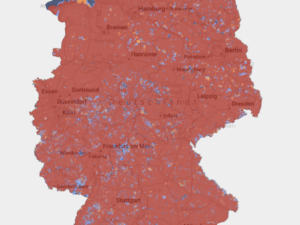European 5G scoreboard
Overview of 5G developments
This page (last updated in June 2024) provides an overview of the state of 5G in the European Union. Below you will find maps and charts about 5G population coverage, 5G rollout and 5G spectrum awards.
Map: 5G coverage
Darker green indicates higher coverage
≤20% ≥20% ≥40% ≥60% ≥80% 100%
89% 5G coverage of populated areas
Reporting period: Mid 2023
Please note: This is a general indicator that does not presume any particular quality of service measures. All 5G coverage is included, including that using DSS. Location covered by at least one operator.
Source: Collected by Point Topic on behalf of the European Commission. These figures are also used in the DESI Index. Data is collected through a survey of National Regulatory Authorities and operators on a regional, NUTS3 level.
Chart: 5G base stations as a percentage of existing 4G base stations
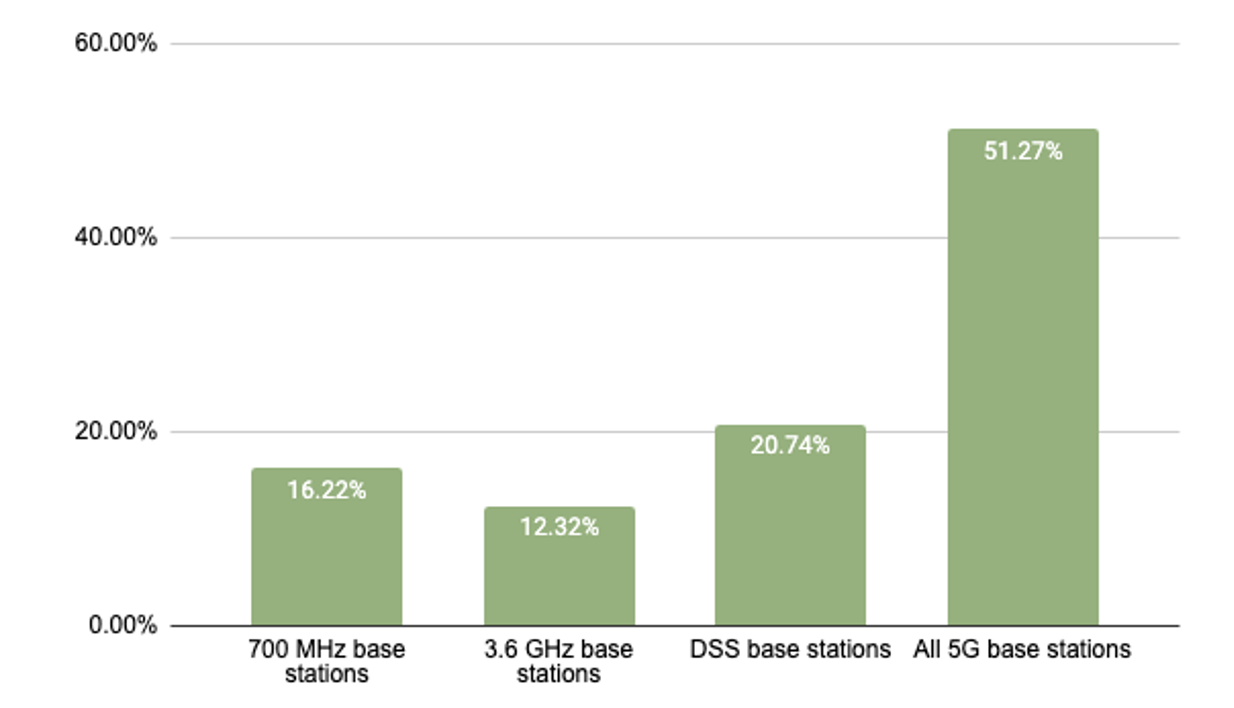
Total of 460,000 5G base stations in EU27
Reporting period: Estonia excluded due to lack of data; Data for Austria, Cyprus, Czechia, Germany, Denmark, Greece, Spain, Finland, Croatia, Hungary, Ireland, Italy, Lithuania, Latvia, Netherlands, Poland, Portugal, Romania, Slovenia, Slovakia collected in March 2024; Data for Belgium collected in February 2024; Bulgaria collected in September 2023; France collected in August 2022, Sweden was collected in October 2023; Luxembourg in December 2022 and Malta in March 2023
Please note: For some EU countries, only the total number of 5G base stations is known. This means the true total number of base stations in the EU in 700 MHz, 3.6 GHz or DSS bands may be higher. Additionally, some countries use bands that are not included in this chart and do no operate using a DSS configuration.
Source: Collected by European Commission via the Digital Decade Committee through a survey of National Regulatory Authorities and collated by the 5G Observatory consortium.
Chart: Percentage of pioneer bands assigned
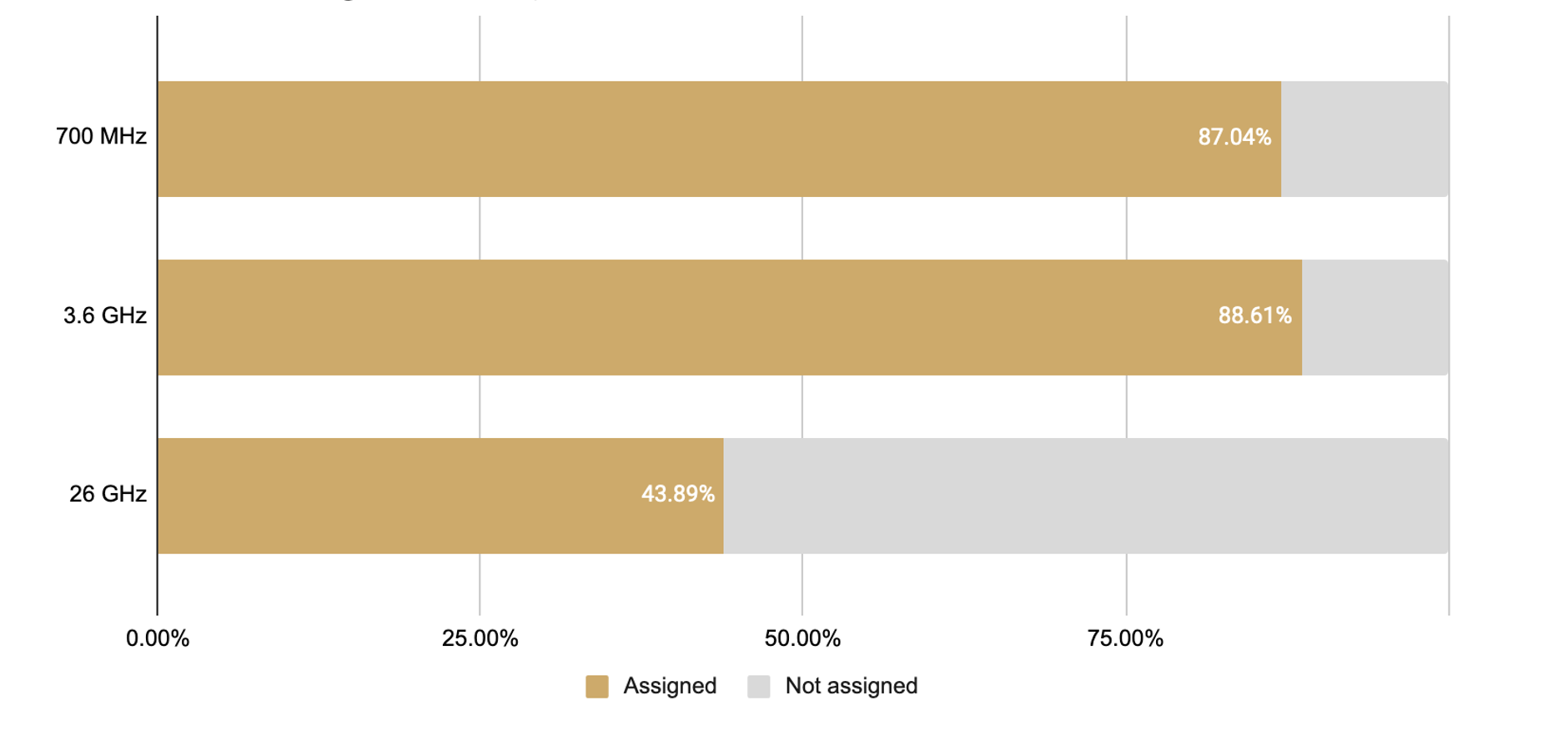
73% of pioneer bands assigned
Reporting period: Up to May 2024
Please note: Countries need to assign 60 MHz in 700 MHz; 400 MHz in 3.6 GHz and 1000 MHz in 26 GHz to receive a 100% score.
Source: Initial data from the annual DESI index and supplemented with new data from the PolicyTracker Spectrum Database and PolicyTracker Auction Tracker.
Map: Pioneer bands assigned by country
Reporting period: Up to May 2024
Please note: Countries need to assign 60 MHz in 700 MHz; 400 MHz in 3.6 GHz and 1000 MHz in 26 GHz to receive a 100% score.
Source: Initial data from the annual DESI index and supplemented with new data from the PolicyTracker Spectrum Database and PolicyTracker Auction Tracker.
International 5G scoreboard
Overview of 5G developments
This page provides an overview of the state of 5G internationally. Below you will find tables and charts about 5G rollout and 5G spectrum awards in major international markets.
Table: Comparison of 5G rollout in international markets
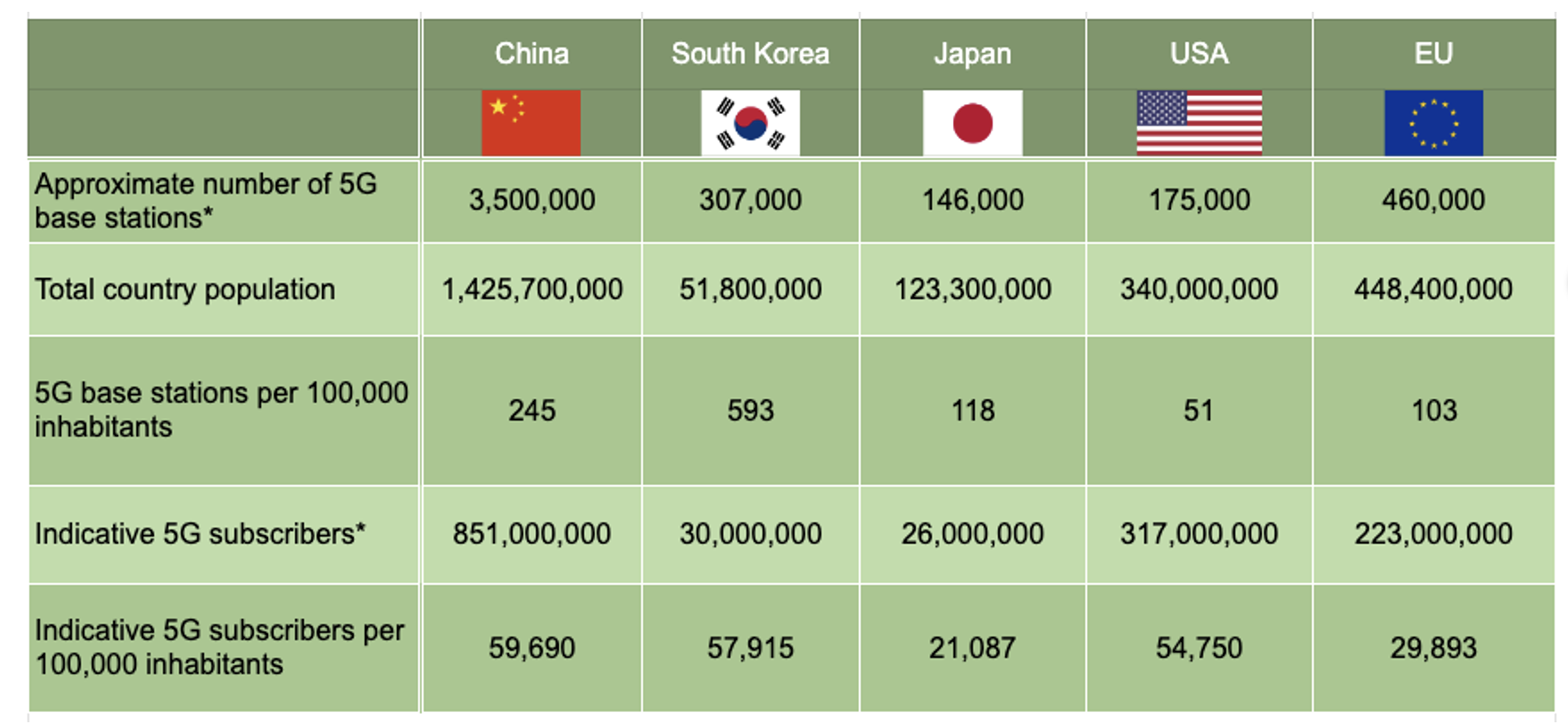
Please note: 5G Base stations: This figure is approximate. There may be discrepancies between the reported figures, as the method for calculating the number of base stations is not standardised between regions. The US number of 5G base stations is an estimate based on available information; 5G Subscribers: The US number of 5G subscribers also includes all of North America. 5G Subscriber data in EU includes all of Western/ Eastern Europe; 5G Spectrum: USA data shows all spectrum made available to mobile operators by the FCC. Not all of this spectrum will have been awarded to operators so the final amount of spectrum assigned to operators may be slightly lower. For the EU spectrum assignments differ amongst EU Member States. Because of this, the number used in the scoreboard shows how much spectrum has been harmonized at an EU-level. Some individual countries may have more spectrum assigned for 5G, while some may have less.
Sources and reporting periods:
- 5G base stations:
- Source: USA: Estimate based on Steel in the Air and Wireless Infrastructure Association Report; South Korea: Mk.co.kr citing Ministry data ; Japan: Xtech news article citing Ericsson study; China: Ministry of Industry and Information Technology (MIIT) .
- Reporting period: USA: End 2023; South Korea: August 2023; Japan: 2022 ; China: February 2024 .
- Population data:
- Source: UN via WorldOMeters.
- Reporting period: 2024.
- 5G subscribers:
- Source: USA: Ericsson Mobility Report, includes all of North America; South Korea: Omdia 5G in South Korea 2023 Report; Japan: Omdia Japan forecast; China: Ministry of Industry and Information Technology (MIIT)
- Reporting period: USA: 2023; South Korea: June 2023; Japan: Q1 2022 ; China: February 2024.
- Spectrum assignments:
- Source: Sourced from the PolicyTracker Spectrum Database & FCC 2022 Communications Marketplace Report.
- Reporting period: Up to end of 2024.
Chart: Authorised 5G spectrum in international markets

Reporting period: May 2024
Please note: For the EU, the data represents spectrum that is harmonized across the EU27. Some individual countries may have more spectrum assigned for 5G, while some may have less or none.
USA data shows all spectrum made available to mobile operators by the FCC. Not all of this spectrum will have been sold to operators so the final amount of spectrum assigned to operators may be slightly lower.
For further information about methodology, see the section on ‘5G Spectrum comparison between EU and other world regions’ in the full 5G Observatory report.
Source: Sourced from the PolicyTracker Spectrum Database & FCC 2022 Communications Marketplace Report.
Table: Main bands authorised for 5G in international markets
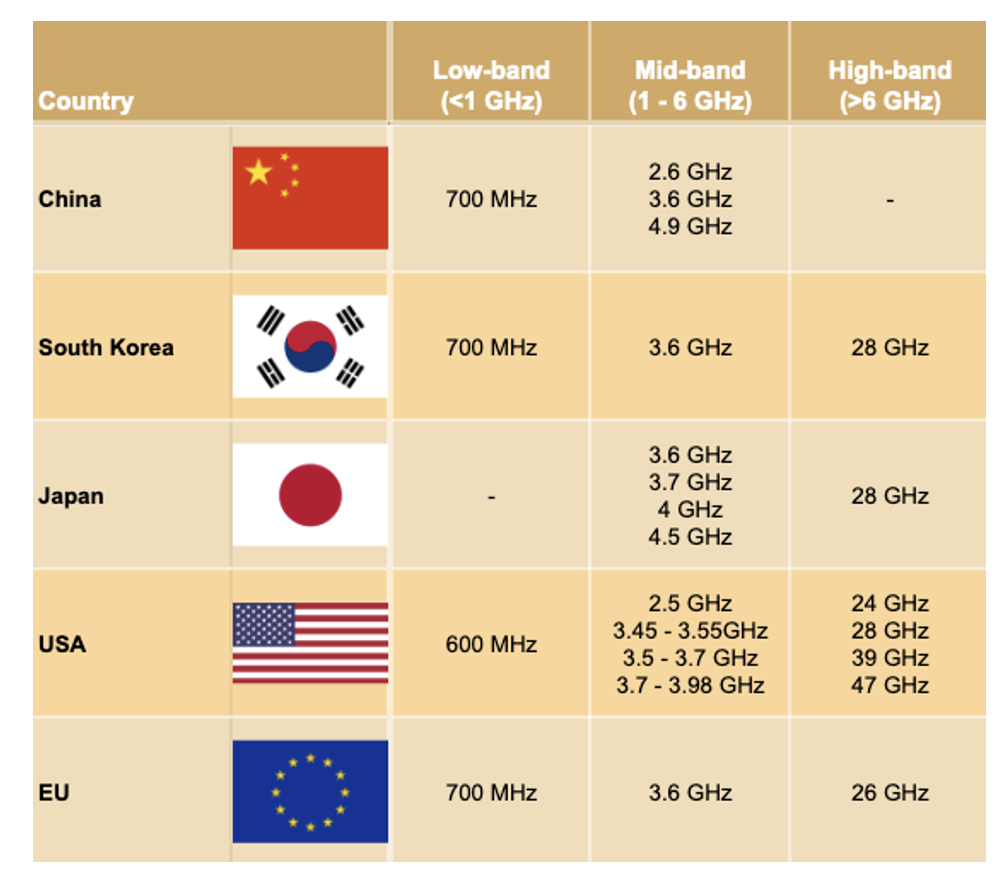
Reporting period: May 2024
Source: Sourced from the PolicyTracker Spectrum Database & FCC 2022 Communications Marketplace Report.








